La gran oportunidad de podcasts de la radio es local y aún está disponible
Cameron Coats30 de junio de 2025
A medida que los podcasts de video aumentan en visibilidad y las principales plataformas empujan a los creadores hacia formatos visuales, una nueva oportunidad destacada pasa desapercibida, especialmente para la radio. Una de las áreas de crecimiento más significativas en el sector de los podcasts no es nacional, es hiperlocal.
Durante un reciente seminario web de Borrell Associates sobre el estado de los podcasts, varios presentadores dejaron claro que el contenido local es una frontera subdesarrollada. A pesar de que los podcasts ahora llegan a más de 115 millones de oyentes semanales en EE. UU., el número de programas centrados a nivel local sigue siendo relativamente pequeño. Ese vacío está llamando la atención de entidades que no se dedican a la transmisión, como los medios de comunicación digitales y las cadenas deportivas.
El exejecutivo de radio y CEO de Amplifi Media, Steve Goldstein, enfatizó que el espacio local de los podcasts se ha descuidado en gran medida y está abierto para que los broadcasters lo reclamen. Señaló el rápido crecimiento de CityCast, Axios Local y la red deportiva Locked On como prueba de que las franquicias de podcasts con sede en la ciudad pueden ganar tracción, especialmente cuando el contenido se entrega a diario y se adapta a las plataformas visuales.
Goldstein argumentó que los broadcasters ya poseen el talento, la infraestructura y la confianza de la audiencia, pero corren el riesgo de quedarse atrás si continúan tratando a la radio como un producto puramente lineal. Advirtió que las audiencias más jóvenes, especialmente la Generación Z, están mucho más comprometidas con el audio digital y es poco probable que sintonicen la radio tradicional de la manera en que lo hacían las generaciones anteriores.
La conversación giró en torno al creciente papel de YouTube en la distribución de podcasts. La directora de socios estratégicos de YouTube, Stephanie Chan, presentó datos que muestran que la plataforma se ha convertido en el principal servicio de escucha de podcasts a nivel mundial. Señaló que la audiencia a través de televisores conectados está aumentando rápidamente, y muchos consumidores están descubriendo programas no a través de episodios completos, sino evaluando miniaturas y títulos en modo de navegación.
Para los creadores de contenido reacios a sumergirse de lleno en la producción de video, Chan recomendó comenzar con elementos visuales simples y escalables, como grabaciones de Zoom o animaciones estáticas. Estas imágenes de fácil acceso pueden mejorar la visibilidad de los podcasts en los algoritmos de búsqueda y descubrimiento de YouTube.
Aun así, no todo el mundo está convencido de que el video deba ser el formato predeterminado.
En una reciente publicación de blog de LinkedIn, la vicepresidente ejecutiva de podcasts y distribución de contenidos de Triton Digital, Sharon Taylor, expresó su preocupación por el hecho de que la industria del podcast se está alejando demasiado de sus raíces, que se basaban principalmente en el audio. Compartió un ejemplo personal en el que, al escuchar programas que le gustaban desde hacía mucho tiempo, cada vez se sentía más como una extraña, perdiéndose el contexto y los detalles que ahora estaban destinados a los espectadores, y no a los oyentes.
Taylor argumentó que los creadores de podcasts deben reconocer el audio y el video como experiencias distintas con diferentes expectativas de la audiencia. En lugar de reutilizar el mismo episodio para ambos formatos, sugirió desarrollar contenido adaptado específicamente a cada uno. Eso podría significar cortes más breves, señales visuales o incluso versiones completamente diferentes del mismo programa.
